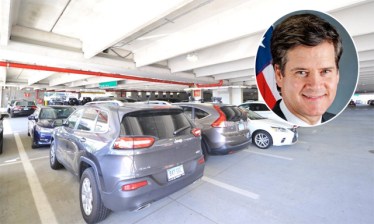LA Planners Leapfrog NYC DCP, Approve Plan With No Mandatory Parking
Angie reported this morning that Washington, DC, is moving to reduce mandatory parking requirements in much of the city, which should lower the cost of housing and curb traffic. Meanwhile, despite talk last year of wide-ranging parking reforms for New York’s “inner ring” encircling the Manhattan core, the Department of City Planning has so far only managed to put forward a reduction of parking minimums in transit-saturated Downtown Brooklyn, the most screamingly obvious location.

Now you can add another city to the rapidly expanding list of places leapfrogging NYC on parking reform: Los Angeles.
Yesterday the Los Angeles City Planning Commission approved the Cornfield Arroyo Seco plan, which will eliminate parking minimums as part of a bid to spur mixed-use development along the Gold Line, a light-rail route that began service in 2003. (Streetsblog LA posted this summary of the plan by Joe Linton in 2009.)
City Planner Claire Bowin told Curbed today that the lack of parking requirements will allow developers to “minimize the amount of parking for specific projects,” given the neighborhood’s proximity to transit, the changing culture of Los Angeles, and the declining need for parking. Given that parking is usually one of the most expensive components of a development project, developers are expected to minimize the construction of parking, or build parking that they can then rent for public uses not attached to their site. The effect, says Bowin, will be to “let the market decide” how much parking is needed and where.
For everyone keeping score at home, Los Angeles has managed to do away with parking minimums along a corridor that’s served by a single light-rail line. Here in NYC, Amanda Burden’s planning department could only muster the will to halve parking requirements for Downtown Brooklyn, with its 14 subway lines.
